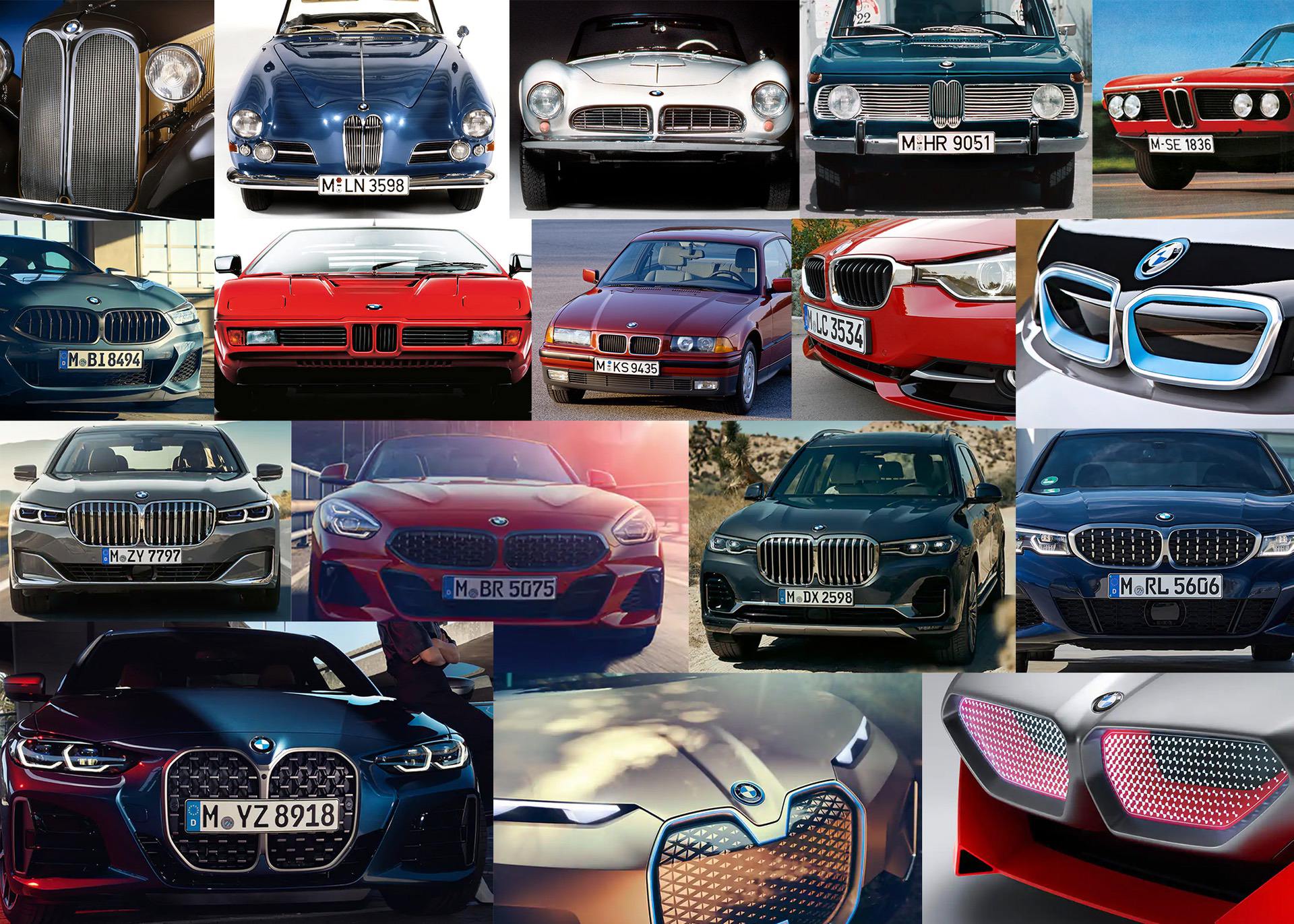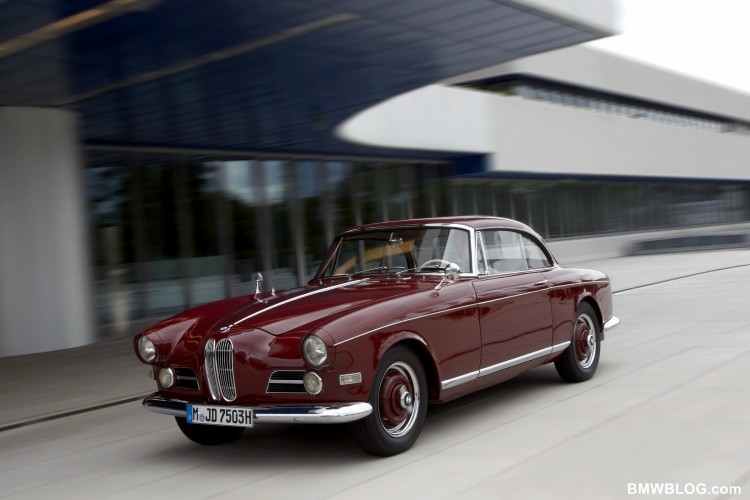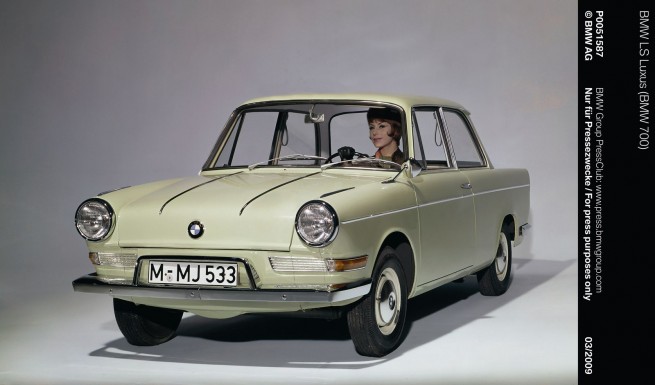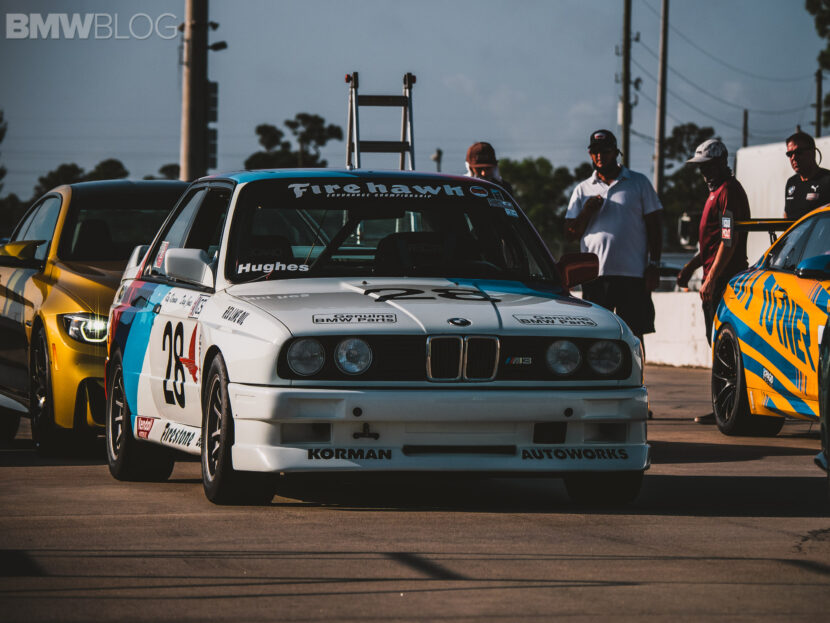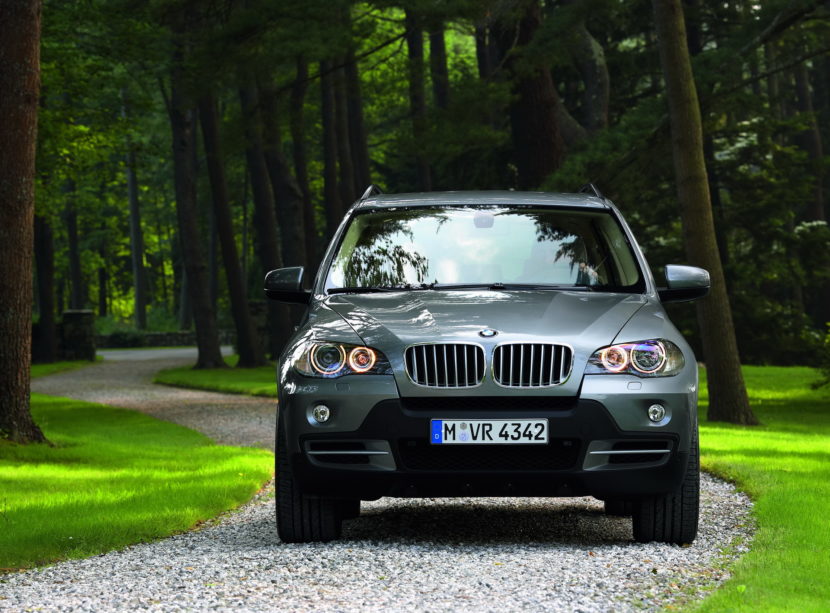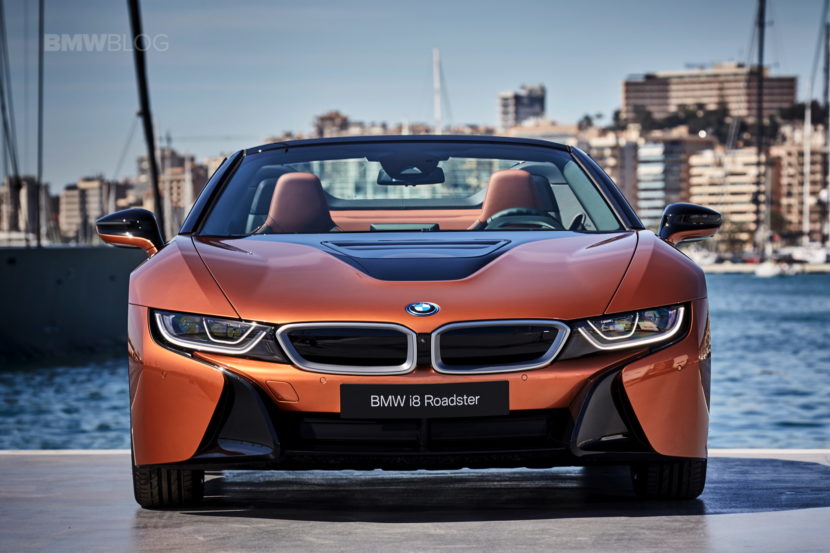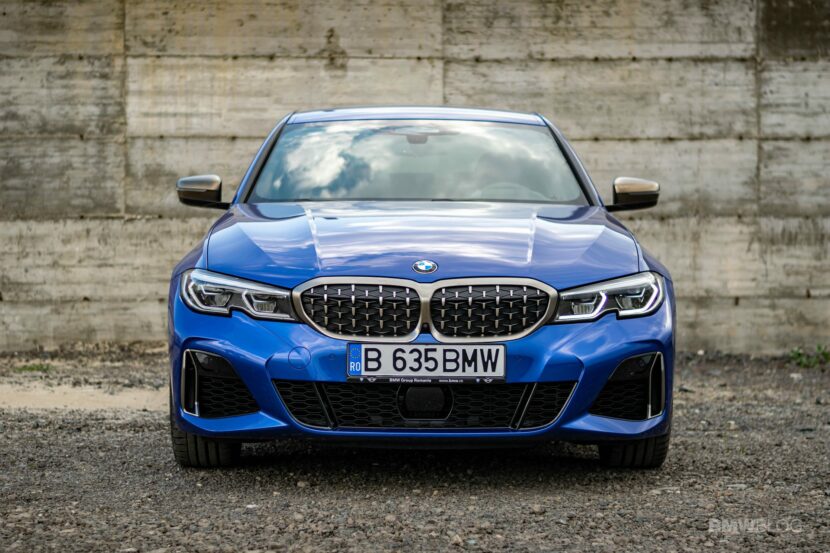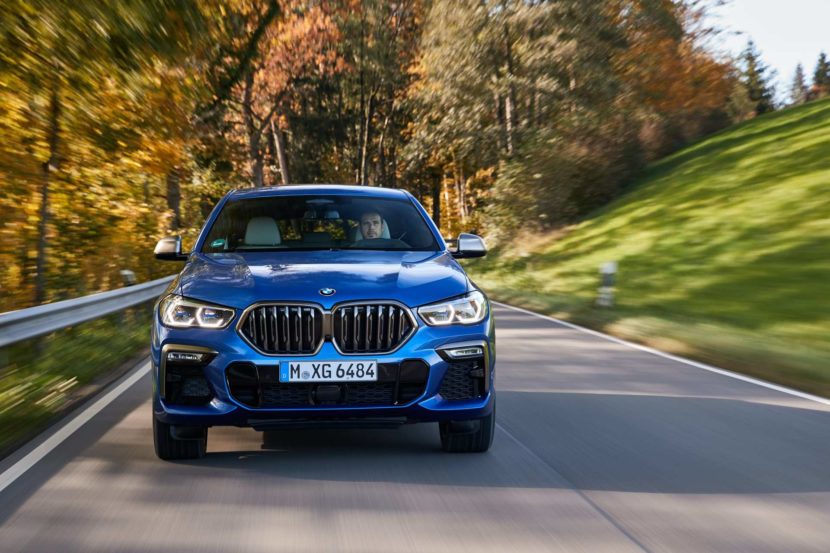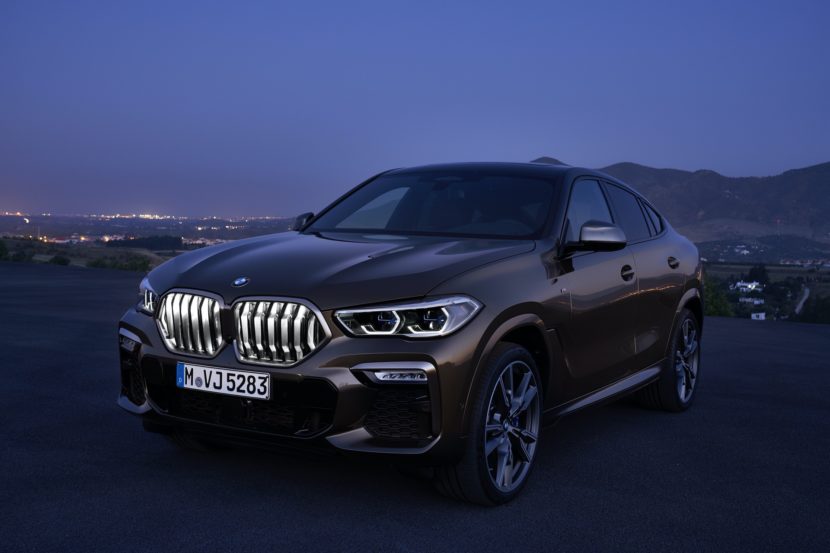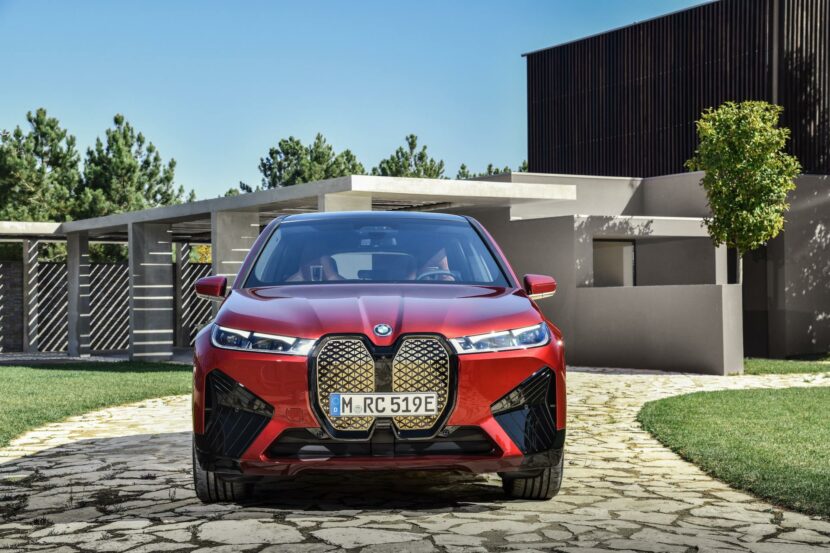There are very few automotive manufacturers that, through decades of history, have managed to preserve some core, instantly recognizable styling details. BMW and their kidney grille are certainly one of the best examples in this respect, with the famous design element being in use since 1933.
Most BMW cars produced in the company’s history have worn the two-piece radiator grille as a clear and proud indication of the vehicle’s roots and branding. Nevertheless, the kidneys are now forever and for all associated with the Bavarian company. And what makes them so special is the diversity of shapes and forms in which it comes, not to mention the various functionalities it employed through time on various models. That pretty much explains everything about how BMW managed to reinvent, transform and evolve what initially looked as a simple design element.
From a simple solution to improve the engine cooling up to a design icon that lights up at night, improves the aerodynamic or houses complex sensors for autonomous – the kidney grilles are versatile and fabulous in every aspect. So, their future is certainly guaranteed. And now, after almost 80 years of presence, they are an even more powerful business card for BMW.
Dixi – The BMW Without The Iconic Grille
As you may recall, BMW as a company exists since 1916, but the serial production of cars under the blue-white roundel only began 13 years later, in 1929. Back then, the first vehicle to roll off the factory line at the citadel city of Eisenach was the 3/15 model (the “Dixi”), which surprisingly did not embody the famous kidneys at the front.
It was only in 1933 that BMW broke the ice and featured the first-ever kidney radiator grille on the 303 small family saloon. And they were even taller than what we get on today’s G2x 4 Series models.
The early beginnings: The BMW 303 and its dual radiator grille
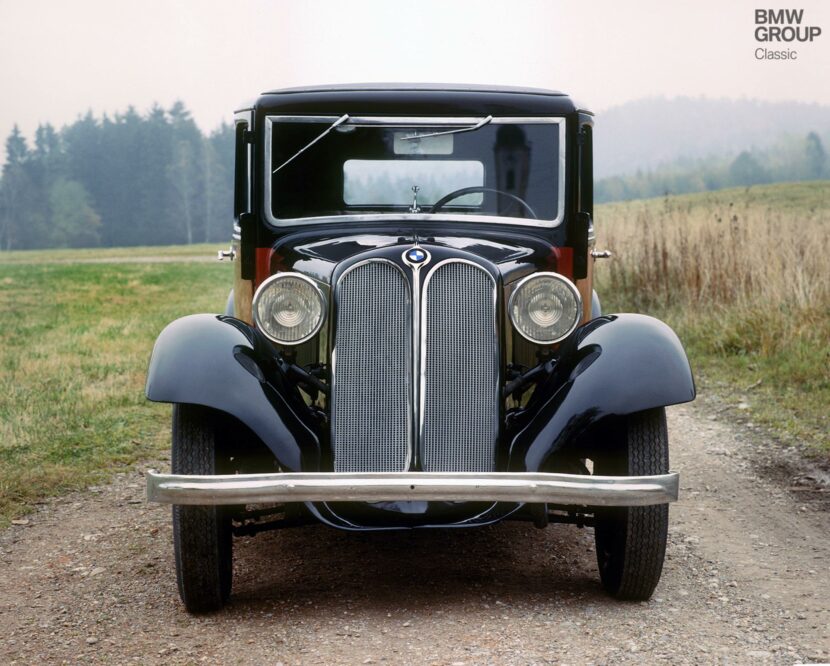
The 303 series was assembled by BMW between 1933 and 1934. Among other premieres at the time, it was the brand’s very first motor car to be equipped with a six-cylinder engine (coded M78). Furthermore, the 303 came with an A-shape tubular frame and was also one of the very first applications of what we are calling today as lightweight measures.
With the 303, BMW also established a solid basis for defining the new brand identity. The upright, large-sized kidneys of the radiator grille vastly improved the cooling of the 6-pot powerplant and also established the new face of BMW vehicles, with the roundel moving to the engine for the first time.
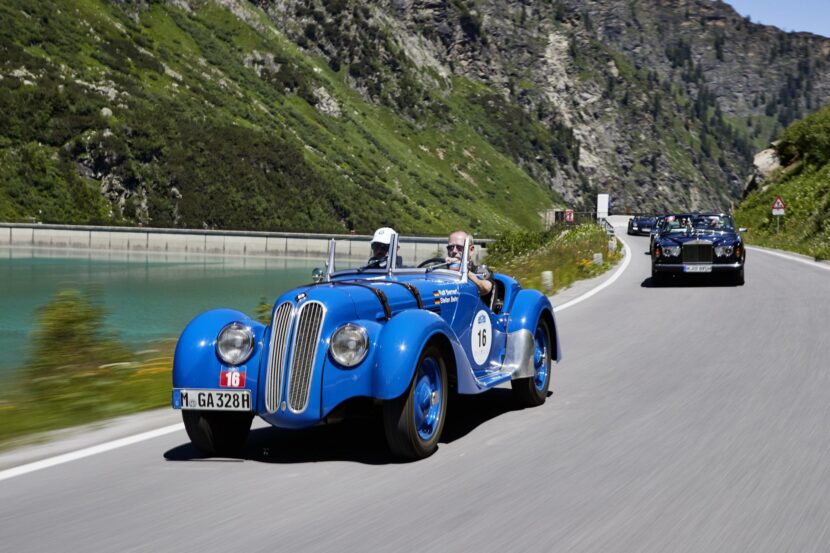
And the successful story was soon repeated by other models produced in the interwar era, such as the 309 (a reengineered 303 with a 4-cylinder unit derived from the M78 engine), the 315 and 319 (together with their roadsters counterparts) and the 329 higher-end sedan. Come 1936, the kidney grille was also found on the legendary BMW 328 series, which made a sensation during many coveted motorsport competitions of the period, such as Le Mans 24h in 1939 and the Mille Miglia race in 1940.
Other models that brought into spotlight their very own and unique kidney grille were the 326 and 327 sister vehicles, which were produced between 1936/1937 and 1941, and then re-manufactured starting with 1945. Following the end of World War II and the Soviet occupation established in the city of Eisenach, the 326 and 327, as well as the 340 series were produced under both BMW and EMW badges until early ’50s. More information on this subject was covered in the following article.
Ahead of and during tormented times: The “Baroque Angels” and the 503 – 507 duo
In 1952, BMW introduced the 501 luxury sedan and 502 V8-powered derivative which remained in the mind of the public as the “Barockengel” (Baroque Angels), given their sophisticated design and high-end status. Both models somehow preserved the tall appearance of the kindeys, that was known from the ’30s models, but went also for a reduction of their sheer width.
After the “Baroque Angels”, the brand launched the third postwar model in 1956, one which was distinguished by modern lines: BMW 503. It gave way to a fully chrome double grille, for the first time with small dimensions in height. For this model BMW used the services of an outside designer, Count Albrecht Graf Goertz.
This time, the typical BMW kidney were redesigned heavily into a new, smaller format of the radiator grille. This was also possible because the radiator grille was no longer the sole component in charge of the engine cooling, although the BMW 503 used an enhanced V8 engine that initially powered the 502 as well.
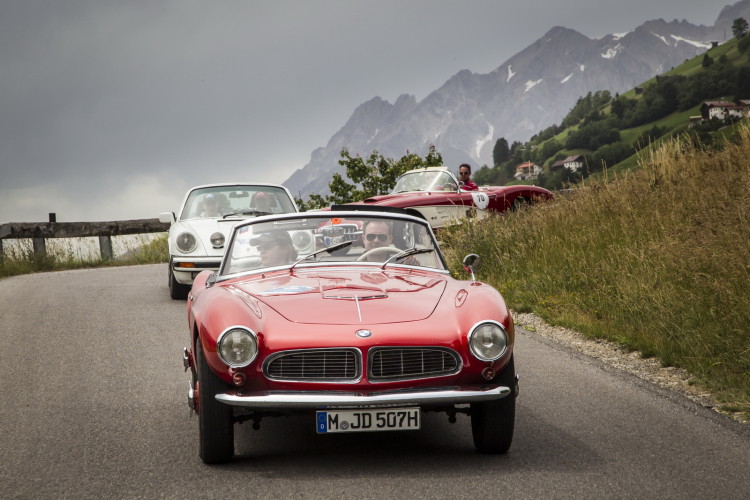
The BMW 507 Roadster came at the same time with the 503, but sported a totally unique and individual design. It also marked another first as the 507 featured the first horizontally oriented kidneys on a BMW, a design artifice meant to create the visual impression of added width and signed off by the same designer Albrecht Graf Gortez. To further improve the engine cooling, the 507 also embodied another distinctive key visual in the forms the side gills, positioned on the front wings of the car.
It is worth mentioning all the upper ranging models produced in the ’50s decade were less successful, with the production costs exceeding the actual realized profits from sales. In fact, even though they highly sought-after, classic collector cars today, those vehicles brought BMW near the verge of going completely bankrupt in 1959.
No grille, no frill: The notable exceptions of BMW Isetta, BMW 600 and BMW 700
Alongside the luxury models of the 1950s, BMW also embarked on a mission to produce more affordable cars as to address itself to a wider customer base. Worth noting are the BMW Isetta of 1955 and its BMW 600 derivative that came out later in 1957. Along with these, BMW also produced the 700 series, which was a sales success for the Munich company and further provided the impetus and financial basis for the relaunch of the company with the series of models that would be recognized as the “New Class”.
Due to the fact these three model series were equipped with low-displacement engines, the cooling was not a problem, so BMW decided to skip the kidneys from the design scheme. In fact, the three manage to look impressive and distinct even by today’s standards and they are instantly recognizable as true Bimmers, even though they don’t wear the famous kidneys.
Relaunch of the kidney grille: The “Neue Klasse” models of the ’60s decade

The “New Class” models, developed on the basis of the successful BMW 700, established BMW as a proper, modern premium car manufacturer and marked a turning point for the company from a technological, styling and sales perspective. The dual grille of the BMW 1500 and BMW 1600, BMW 1800 and BMW 2000 was very similar to that of the BMW 503, but for the first time, the two parts appeared united, narrower than on all the preceding models and placed in the middle of the two wide horizontal grids. Among other models that retained and evolved the kidney grille of the 503 model were the 1962 BMW 3200 CS and 1965 BMW 2000 CS.
The BMW 1500 was the forerunner of all modern premium sedans developed by the Germans. Carrying the signature of former BMW designer Wilhelm Hofmeister, the New Class series first introduced another design element that became emblematic and attributable to BMW: the Hofmeister kink, which visually defined the cult of the rear-wheel drive architecture underneath every model.
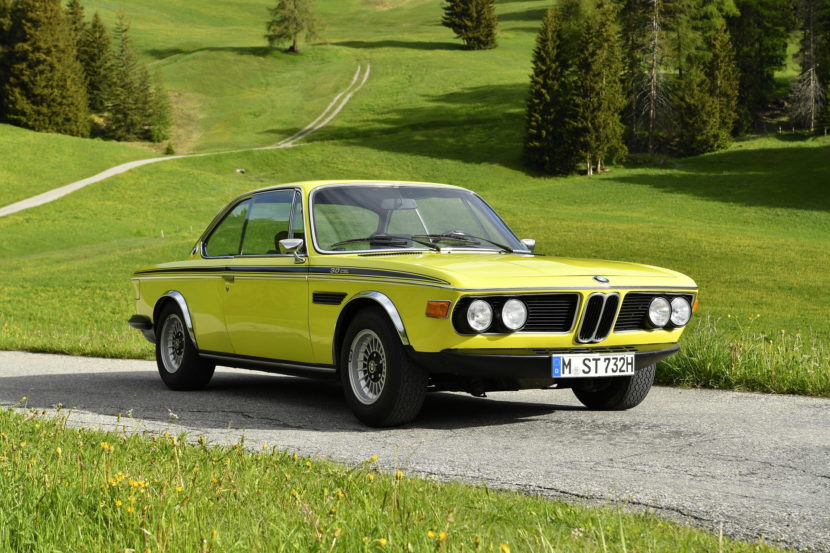
With some minor variations, but retaining most similarities, the 1500-style kidneys and framing (which also discreetly incorporated the circular headlight at each edge of the front end) remained basically unchanged on all model series that followed until the 1980s, such as the E3/E9 range, the E21 3 Series, the E12 5 Series, the E24 6 Series and E23 7 Series. What made all these significantly appealing was also the distinctive shark-nose fascia, which is also another design motif linked to BMW.
The BMW M1 pioneer and the 80s-90s era models

The legendary M1 supercar had flat air intakes due to the low height of the front, and its grille is one of the smallest ever used on a BMW. The grilles seemed “embedded” and separated from the secondary air intakes on the body, but also flanked by retractable headlights. The design of the BMW M1 bears the Giugiaro signature and was an evolution of the BMW Turbo concept car, launched in 1972, on the occasion of the Munich Olympics, a project designed by the Frenchman Paul Bracq.
The special shape of the body, very sharp, is also reflected by a unique construction, one-off at BMW, featuring a centrally-positioned engine. The design of the BMW M1’s dual grille inspired other models that became empathetic to the brand, such as the BMW Z1 (1987) or the BMW 8 Series (1989).
Blending in ideas from past, the reduced-size kidneys also found their on several other models of the ’80s and ’90s, in various combinations, with a chrome edge and positioned on black grids, like in the case of the E30 3 Series, E34 5 Series and E32 7 Series generations, or directly embedded in the hood and slightly rounded off like in the case of the ’90s lineups: E36/E46 3 Series, E39 5 Series, E38 7 Series, the first-ever E53 X5 and the iconic E36/7 – E36/8 Z3.
For the same of tradition, the kidneys were also stylistically featured on the nose of the BMW F1 cars, on the LeMans prototypes and on other less-known models, such as the IMSA M1/C race car that competed in the 1981 season.
Rooted into tradition: the Z8 (E52)
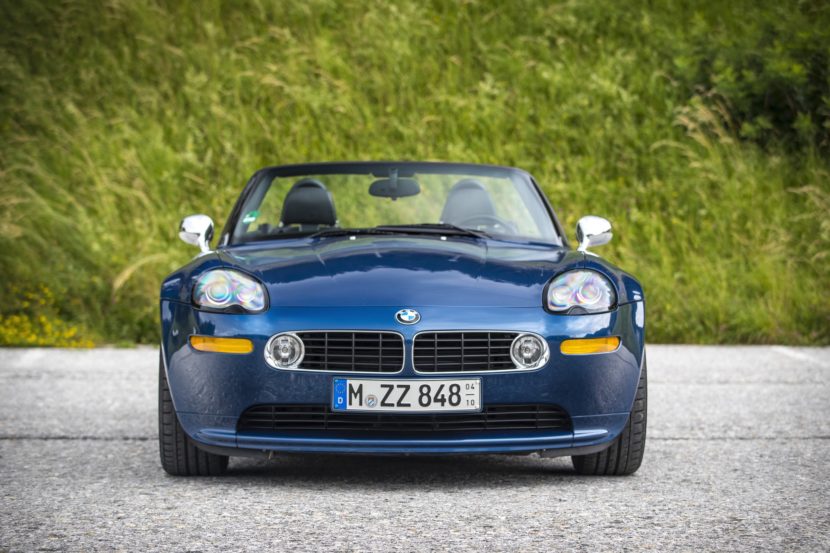
Launched in 2000 as a tribute to the BMW 507, the BMW Z8, designed by Henrik Fisker, took over many of the 507’s iconic design elements, including the horizontal kidneys and the side gills. With just under 6,000 units produced, the aluminum body and chassis and equipped with the V8 engine used by the BMW M5 model at the time, but also the spectacular appearance in James Bond, the BMW Z8 has already become a legend. Furthermore, ALPINA also got busy with the Z8 and prepped a very limited version of it: the Roadster V8 rare bird, assembled in just 555 units.
New philosophy, new kidneys: The Bangle Era models
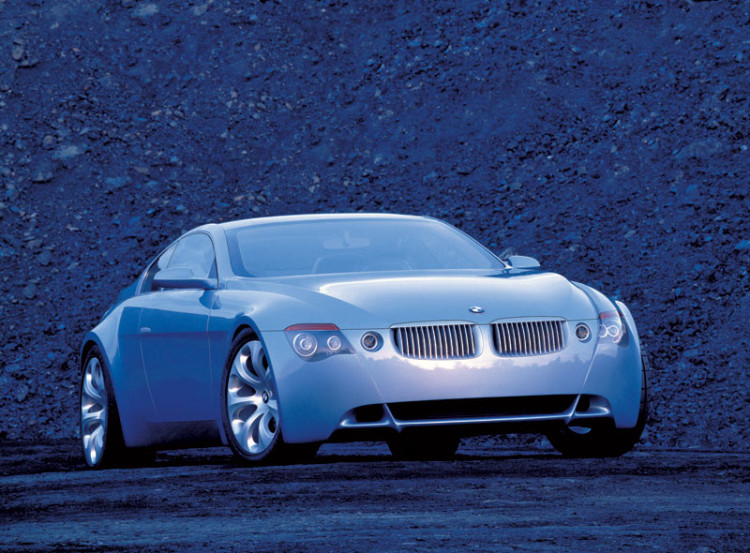
In the early 2000s, BMW decided to perform a major paradigm shift with respect to its classic styling language. Forgotten were the simple lines of the past models, in were the extravagant flame surfacing and body details. Under the watchful guidance of Chris Bangle and driven by the inspiration from the Z9 Concept Car, an entire host of new model generations started in 2001 with the revolutionary E65/E66 7 Series.

Then came the E60/61 5 Series in 2003, followed by the long-awaited E63/64 6 Series in 2004 and E90/91 in 2005. Besides those, the very first 1 Series hatchback (the E87) was born in 2005, as was the very first X3 mid-sized SAV in 2003. Not a single model from this breakthrough era showed any similarity in terms of kidney style with another one. Some of the grille were smaller, other were bigger, some came with a discrete cowling at the top end, but one thing was for sure: it signaled that new, bigger and more varied kidney grille were on their way.
An example could be seen at the shift of generations. The kidneys on the new E70 X5 from 2006 or F01/F02 7 Series from 2008 are significantly larger than those on their predecessors. Not to mention that designers afforded the liberty to create an individual kidney style for every new BMW model that followed. In 2012, when the new F30 3 Series, it also marked the advent of a new styling motif, as the outer edge of the horizontally-displaced kidneys joined the elongated, sleek headlights. Practically, as you can see, only the sky is the limit to creation.
Electrification: BMW i3
As BMW was making the first steps into the electric territory, the kidneys also had to be reinvented for the new purpose. The dual grille on the 2013-launched BMW i3 (I01) has a flat, wide design, a dark surface and blue accents, identifying it as an innovative BMW electric car. The aerodynamics of the BMW i3 benefit from the double closed grille. A similar grid design was found on the BMW i8 (I12/I15), a plug-in hybrid model with a petrol engine located at the rear, in similar fashion to the classic M1.
The BMW i3 has truly been a concept car in series production, with the role the brand’s electric platform and architecture and introducing a number of very valuable ideas for the BMW Group and the entire automotive industry: from renewable materials and lightweight production solutions (such as the use of large scale of carbon fiber) to a new philosophy of operation and driver experience (it was for example the first car that can suggest through its own navigation system routes with public transport). The exterior designer was signed by Richard Kim, but BMW was already anticipating the idea of an electric minivan with the BMW E1, a concept car presented at the Frankfurt Motor Show in 1991.
Aerodynamic solutions: BMW 7 Series, sixth generation – 2015

The sixth generation BMW 7 Series has meant a return to supple lines that reinforce an agile and sporty image of the luxury limousine. The new model came once again with a very rich set of revolutionary technologies. These included one of the most sophisticated undercarriages offered by a luxury limousine, which combines all-wheel drive, rear-wheel steering, air suspension, intelligent damper adjustment and a stereoscopic camera system and active stabilizer bars. The sixth-generation BMW 7 Series has also introduced adaptive laser headlights with Selective Beam function or gesture control, as well as the most powerful V12 or “in-line” diesel engines ever bearing the BMW logo.
Along with these, for extra efficiency, the grille had for the first time intelligently controlled blades, integrated in the double grille barrels. They can completely close the double grille on the body for aerodynamic optimization and improved engine thermal management. The solution comes after BMW has been using “Air Flaps Control” integrated behind the grille for almost 20 years.
The BMW 7 Series received a restyling at the beginning of 2019, which was noted for taking over some design elements from the BMW Vision Future Luxury concept, such as the air intakes at the bottom front or the larger grille. To meet the new proportions, a larger grille was mounted on the hood, also used for the BMW X7.
If the exterior design of the model launched in 2015 belonged to Nader Faghihzadeh, who also signed the first big coupe in the company’s history. BMW 6 Series, the restyled version was executed by Alexey Kehza.
Upside down: The first-ever BMW X2 (2018)
Inspired by the concept from 2016, the compact-sized X2 Sports Activity Coupe brought to life to long-mulled idea of inverted kidneys. Basically, the dual setup means that both units are shorter at the top and wider at the bottom, as to create a dynamic visual effect.
A new format: G20 BMW 3 Series
The seventh generation BMW 3 Series was also designed by Alexey Kehza. For the first time, the BMW M – M340i and M340d – introduced a different grille structure – the vertical bars were replaced by a diamond mesh, as a distinctive design element for the sporty versions. The same design element was later taken over on the high-performance M135i models from the BMW 1 Series, but also for all BMW Z4 and BMW 4 Series models.
Thus, the design language for the iconic BMW grille is adapted to the type of model: simple vertical bars for the basic models, mesh grille for a series of M or sporty 4 and Z4 models and double grille for the high-performance M models, such as the BMW M5 or BMW M8.
Big and joined: The new face of the BMW kidneys
Starting with 2018 model year, kidneys at BMW began growing heavily in size. Furthermore, they are now connected in-between for more cohesiveness. The G05 X5 was the wind of change, followed by the G07 X7 whose kidneys are simply insane in their sheer, gargantuan size. To further highlight the esteem and superiority of the 7 Series and bring it in line with the X7, the G11/G12 LCI generations that was launched in Spring 2019 also flashed its brand new pair of large-sized kidneys.
Here comes the light: G06 BMW X6
The BMW X6 has always been the brand’s extroverted model. Unlike the BMW X5, the model with which it shares a number of constructive elements, the BMW X6 stands out with an interpretation of the double grille that appears lighter which inspires more force. The result is achieved using only 12 vertical bars instead of the 14 on the BMW X5.
At the same time, the BMW X6 received for the first time a special interior lighting of the contour and radiator grille bars, optionally available under the name BMW Iconic Glow. BMW is the first manufacturer in the world to offer this solution, approved for use on public roads. The light turns on automatically when at least the low beam of the car is running and the user can deactivate this function.
Inspired by tradition: G22 BMW 4 Series Coupé and the new M3/M4
The new 4 Series was anticipated at the 2019 Frankfurt Motor Show by BMW Concept 4. The concept car had a stylization, in an evocation of solutions such as the famous Zagato body, composed the structure of the grid of dozens of stylized 4 digits.
Launched digitally globally in 2020, the BMW 4 Series Coupé features an imposing, massive front grille with strong vertical orientation that evokes the design line of interwar models, with links to the legendary BMW 328 Mille Miglia Coupé and BMW 328 Kamm Coupé. The new model marks for the first time a clear differentiation of the exterior design from the BMW 3 Series Sedan, complimenting the much sportier settings of the Coupé chassis.
The new BMW M3 and BMW M4, which come once again with a new interpretation, feature sensational kidneys whose contour is directly integrated into the body and sport a horizontal arrangement of the double bars specific to M models.
Technology platform: BMW iX (I20)
For the BMW iX electric model, the dual grille is an evolution that starts from the benchmarks set by the BMW i3. The grid for the BMW iX was developed at the BMW Group’s Center for Technology and Lightweight Construction (LuTZ) in Landshut and is a symbol of industry transformation. Cooling functions have been replaced by a multifunctional and innovative sensor platform for assisted and automated driving. BMW calls this solution “shy-tech”: technology that works discreetly and avoids a clutter of shapes that would overwhelm the user.
To guarantee the highest possible accuracy when using the radar sensor mounted behind the grid, a vacuum nanoscale coating process is used in its manufacture. Here, the two-tone finish and 3D effect are produced by vaporization using laser technology and by a high vacuum plasma application technique. The combination of the laser-based method, developed specifically for the production of the iX grid, and the precisely defined grid thickness ensures the optimal performance of radar sensors in a unitary grid design, without special design changes to integrate new technology components.
The new grid comes in absolute preview and with intelligent protection solutions. An extra layer of intelligent polyurethane reduces the susceptibility of the grid to damage. The “self-healing” property of its surface repairs minor scratches – for example, in 24 hours at room temperature or in five minutes under a hot air source.
It’s all in the grille: More to come
For the time being, one thing’s for sure: the future kidney grilles will likely not get any smaller than what we see today. We are expecting to see new ideas across all model families, combining style with technology and aerodynamic efficiency. The future G70/71 7 Series and the first-ever G09 X8 are guaranteed to ignite another big revolution when they are out by 2022.
[Top Image Collage: James Bachici]


